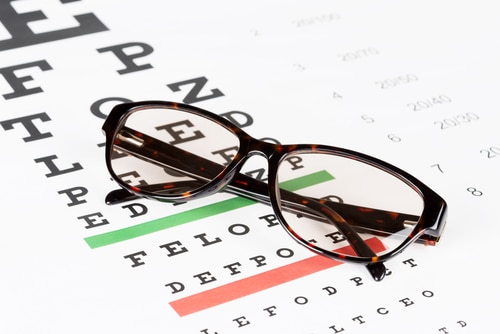The decision between prescription glasses and contact lenses is a common dilemma for those with vision impairments. Both options offer practical solutions for correcting refractive errors, such as myopia (nearsightedness), hyperopia (farsightedness), astigmatism, and presbyopia. However, choosing between these two vision correction methods is not merely a matter of aesthetics; it also involves comfort, convenience, cost, and eye health considerations. This comprehensive guide will explore the pros and cons of prescription glasses vs contact lenses to help you make an informed choice that best suits your lifestyle and visual needs.
Prescription Glasses: A Time-Tested Classic
Advantages of Prescription Glasses
Clarity and Comfort
Prescription glasses provide stable, clear vision without direct contact with the eye. The lenses rest comfortably on your nose, eliminating potential discomfort from foreign objects touching your eyes. This can be particularly appealing for individuals with sensitive or dry eyes.
Easy Maintenance
Glasses are relatively low-maintenance. They do not require cleaning or storing; they can be wiped clean with a microfiber cloth. There is no need for cleaning solutions, contact lens cases, or daily disinfection routines.
Protection
Eyeglasses can also serve as a protective barrier for your eyes. They shield your eyes from environmental elements like dust, wind, and harmful UV rays. Some glasses can even be equipped with prescription sunglasses lenses for outdoor activities.
Style and Fashion
Glasses have evolved from purely functional accessories to stylish fashion statements. The wide variety of frame styles and colors allows you to express your personality and match your eyewear to your clothing and mood. This variety can be a fun and expressive aspect of wearing glasses.
Disadvantages of Prescription Glasses
Limited Peripheral Vision
One of the primary drawbacks of glasses is their limited peripheral vision. The frames can obstruct your field of view, especially if you choose thicker frames or frames with small lenses.
Reflections and Glare
Glass lenses can reflect light, causing glare in certain lighting conditions, such as driving at night or under intense sunlight. Anti-reflective coatings can help reduce this issue but may not eliminate it entirely.
Impact on Physical Activity
For some, glasses can impede certain physical activities. They may slip off during intense exercise, making sports or activities like swimming less convenient. In such cases, prescription sports glasses or goggles may be necessary.
Contact Lenses: The Invisible Solution
Advantages of Contact Lenses
Full Field of Vision
Contact lenses sit directly on the eye, providing a natural field of vision without any frame obstructions. This makes them an excellent choice for activities that require a comprehensive, unobstructed view, such as sports or driving.
Enhanced Aesthetics
Contact lenses are virtually invisible and are often considered more aesthetically pleasing than glasses. Many people choose contacts for cosmetic reasons, as they don’t alter your facial appearance.
Suitable for Active Lifestyles
Contacts are ideal for those with active lifestyles who enjoy sports, exercise, or outdoor activities. They won’t fog up in cold weather or slip down your nose during a workout, offering a seamless experience.
Reduced Risk of Fogging and Glare
Contact lenses don’t fog up in changing temperatures and don’t cause glare or reflections in the same way that glasses can, making them more comfortable for activities in different lighting conditions.
Disadvantages of Contact Lenses
Maintenance
Contact lenses require a higher level of maintenance compared to glasses. They need to be cleaned, disinfected, and stored correctly. Neglecting this maintenance can lead to eye infections or discomfort.
Cost
Contacts can be more expensive than glasses over time, considering the ongoing costs of cleaning solutions, storage cases, and replacement lenses. In addition, you’ll need regular eye exams to ensure your prescription remains accurate.
Potential for Eye Irritation
Wearing contact lenses can lead to eye irritation, dryness, or allergies for some individuals. Extended use or sleeping with contacts can increase the risk of eye problems, including infections.
Learning Curve
Inserting and removing contact lenses can be tricky for first-time users. It may take some practice and patience to become comfortable with handling them, and some people may find putting them in or taking them out challenging.
Eye Health Considerations
Glasses and Eye Health
Eye Protection
Glasses act as a protective barrier, shielding the eyes from dust, allergens, and harmful UV radiation. They benefit individuals who spend extended periods in outdoor environments or need UV protection.
Dry Eye Management
For those prone to dry eyes, glasses can be more comfortable as they don’t come into direct contact with the eyes. Some glasses are also designed with special coatings to reduce glare and minimize dry eye symptoms.
Minimized Risk of Infection
Unlike contact lenses, which require diligent care and hygiene, glasses pose a lower risk of eye infections if adequately maintained. This is especially important for individuals with sensitive or allergy-prone eyes.
Contact Lenses and Eye Health
Oxygen Permeability
Modern contact lenses are designed to allow oxygen to reach the cornea, maintaining eye health. However, some users may experience discomfort or eye redness, especially when wearing lenses for extended periods.
Eye Irritation and Allergies
Contact lenses can lead to eye irritation or allergies, mainly if the lenses are not adequately cleaned and maintained. Users should strictly follow their optometrist‘s recommendations for proper care.
Regular Eye Exams
Contact lens wearers require regular eye exams to monitor eye health and ensure that their lenses fit correctly. Neglecting these exams can lead to eye problems that might have otherwise been detected and addressed early.
Factors to Consider When Making a Choice
When deciding between prescription glasses and contact lenses, consider the following factors:
1. Lifestyle and Activities
Your daily activities play a significant role in determining which option is more suitable. Contact lenses may be better if you have an active lifestyle and frequently participate in sports or outdoor activities. On the other hand, glasses may be more convenient if you spend most of your time indoors or don’t engage in physically demanding activities.
2. Comfort and Eye Sensitivity
Consider your eyes’ comfort. If you have sensitive or dry eyes or have experienced contact discomfort, glasses may be the safer choice. However, some contact lens types are specifically designed for sensitive eyes, so consult with your eye care professional for options.
3. Aesthetic Preferences
Some individuals prioritize aesthetics and prefer the look of glasses, while others prefer the “invisible” correction of contact lenses. Your personal style and fashion choices can influence your decision.
4. Cost Considerations
Both glasses and contact lenses come with associated costs. Glasses tend to have lower ongoing costs, while contact lenses require purchasing lenses and maintaining supplies like cleaning solutions and cases. It’s essential to consider your budget when making a decision.
5. Eye Health and Medical Conditions
Certain eye conditions or health issues may affect your ability to wear contact lenses. Conditions like chronic dry eye, eye allergies, or frequent eye infections may make glasses safer for maintaining eye health.
6. Convenience and Routine
Glasses are generally more convenient for those who prefer a low-maintenance vision correction solution. If you don’t want to hassle with the daily care and handling of contact lenses, glasses may be the more straightforward option.
Making an Informed Choice
When deciding whether to opt for prescription glasses or contact lenses, it’s crucial to consult with an eye care professional. They can help you make an informed decision by considering your needs, lifestyle, and eye health. Here are some additional tips to guide your choice:
- Schedule an Eye Exam: Start with an eye exam with an optometrist or ophthalmologist. They will assess your visual needs and help determine your best option.
- Discuss Your Lifestyle: Be open with your eye care professional about your daily activities, whether you engage in sports, work long hours in front of a computer, or have a strong fashion preference.
- Try Both Options: If you are undecided, consider wearing glasses or contact lenses. Many individuals switch between the two based on their activities or mood.
- Consult About Specialized Lenses: Discuss these options with your eye care provider if you have specific vision needs, such as reading glasses or specialized lenses for sports.
- Consider a Combination: Some individuals find that a combination of glasses and contact lenses works best for them. They use glasses for daily tasks and switch to contacts for certain activities.
Conclusion
The choice between prescription glasses and contact lenses ultimately depends on your preferences, lifestyle, and visual needs. Each option has advantages and disadvantages, and there is no one-size-fits-all answer. By considering factors such as comfort, convenience, aesthetics, and eye health and consulting with an eye care professional, you can make an informed choice that ensures precise and comfortable vision. Whether you choose the classic appeal of glasses or the invisible convenience of contact lenses, the most critical factor is maintaining the health and well-being of your eyes.

